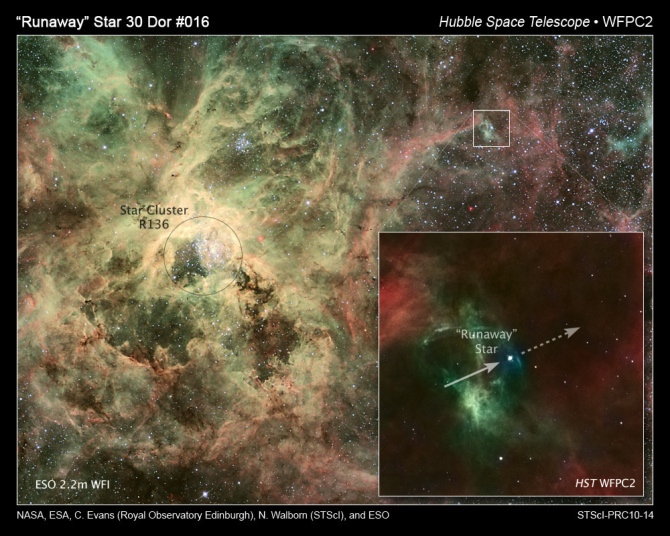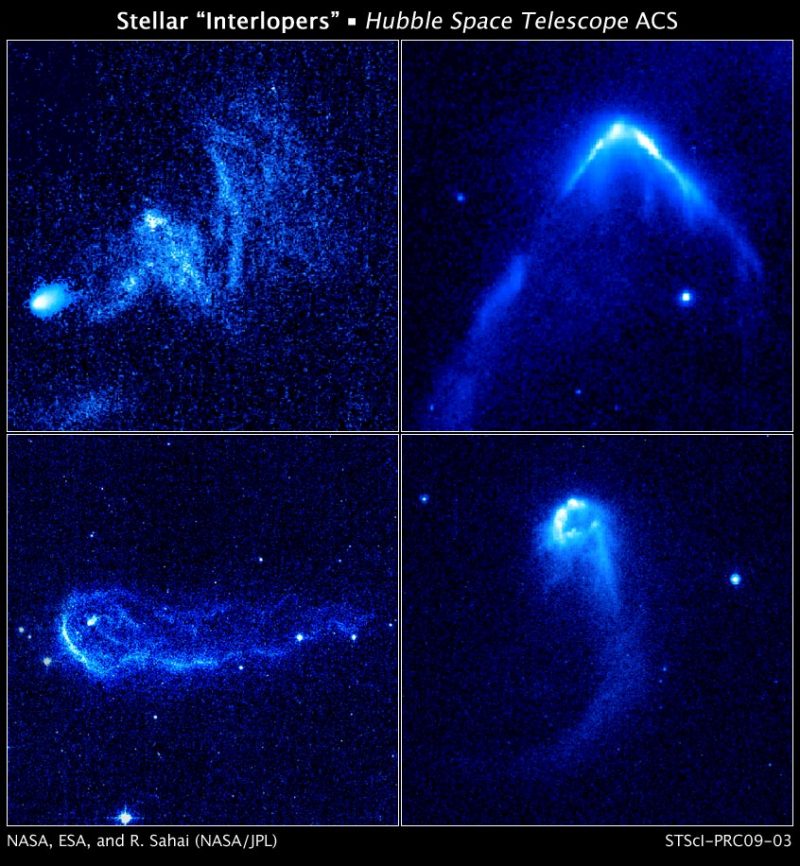
A runaway star moves faster and in a different direction
The sun and all of the Milky Way’s stars are moving in orbit around the center of our galaxy. In fact, it’s more or less orderly, but there are local movements within this general stream of stars, too. Astronomers have identified some Milky Way stars that are moving faster than expected, or in a direction that seems unusual. In view of this unusual motion, they use the term runaway star to describe these renegades.
Stars form in clouds of gas and dust. Multiple stars form from a single cloud. Therefore, many Milky Way stars move through space in loose associations, or more tightly bound open star clusters. By tracking the motions of a runaway star, astronomers can sometimes determine its original stellar association. However, something must have happened to kick the star into fast motion, on a path through space different from its original cluster or association.
Astronomers point to 2 possible reasons for a runaway star
The first scenario involves two binary star systems – two systems, each containing two stars – that pass close to each other. The encounter can disrupt both systems, and eject one or more stars at relatively high speeds.
The second idea involves a supernova explosion in a multiple star system. These powerful explosions can propel associated stars that didn’t explode along new paths, at much-higher speeds.
GD 50 might be from the Pleiades
One runaway star is GD 50, a white dwarf star with a bit more mass than our sun, but smaller than the Earth. A dime as dense as GD 50 would weigh 2,600 pounds (~1,200 kilos) on Earth. GD 50 is in the direction of the constellation Eridanus the River. But, around 2009, astronomers who’d been studying this star found that it moves through space in the same direction and at the same speed as the Pleiades star cluster. And Pleiades is not far from Eridanus on the sky’s dome. GD 50 is also about the same age as stars in the Pleiades. Therefore, astronomers concluded that GD 50 was born in the Pleiades, then flung out, possibly after passing too close to another star.
Some other runaway stars
Further examples of runaway stars are AE Aurigae, 53 Arietis and Mu Columbae. In fact, they’re all moving away from each other at velocities of over 100 km/s (for comparison, our sun moves through the Milky Way at only about 20 km/s faster than the local average). Tracing their motions backwards on the sky’s dome, astronomers can see that – about 2 million years ago – the paths of these stars intersected near the Orion Nebula. There is a great loop or bubble of gas – called Barnard’s Loop – surrounding Orion’s three prominent Belt stars. Barnard’s Loop may be the remnant of the supernova that launched these stars as runaway stars.
Explore runaway stars on Wikipedia

Bottom line: Runaway stars move differently from the general stream of stars in our Milky Way galaxy. The most compelling evidence suggests they were kicked out from their original star clusters by encounters between pairs of binary stars, or by a supernova explosion.











